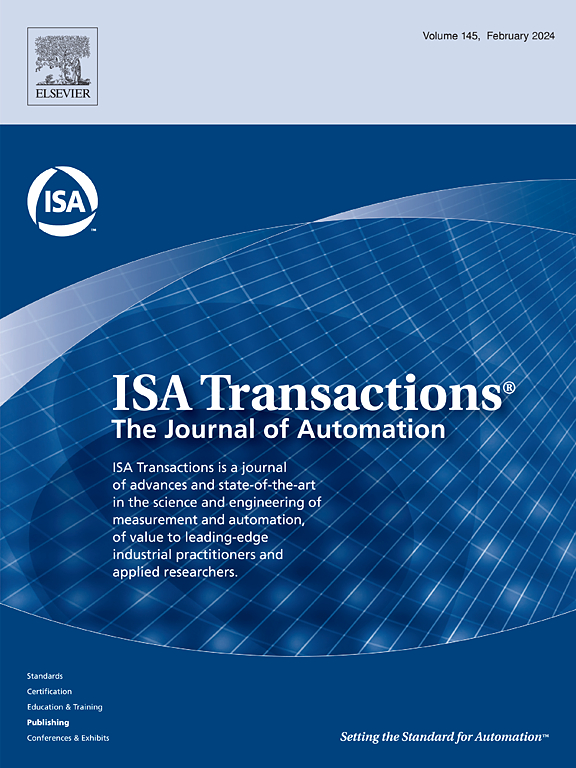基于导向矢量场的路径积分控制增强自主水下航行器避障能力。
IF 6.5
2区 计算机科学
Q1 AUTOMATION & CONTROL SYSTEMS
引用次数: 0
摘要
自主水下航行器(auv)在跟踪、导航和避障方面面临着重大挑战,这些都是推进智能水下机器人的关键方面。为了提高矢量推进器水下航行器在复杂环境下的精度和效率,提出了一种将导向矢量场(GVF)概念与模型预测路径积分(MPPI)控制相结合的新型导航技术。该方法利用AUV的相对定位和环境数据生成所需的GVF避障轨迹。然后,将MPPI优化应用于控制输入,考虑动态约束,实现有效的跟踪和避障。大量的仿真实验证明了该方法在具有非凸障碍物的复杂场景中导航的有效性。在路径跟踪方面,跟踪误差降低了64 %,同时在各种障碍物配置下保持安全距离。结果表明,该集成方法成功地将MPPI的局部优化预测能力与GVF的全局速度规划能力相结合,在保证执行过程的有效性和安全性的同时,实现了复杂环境下AUV的高效导航。即使在干扰条件下,该方法也具有鲁棒性,跟踪误差仅为0.017 m。该研究为AUV在具有挑战性的海上环境中的操作提供了解决方案,可用于海洋测量,水下搜索和救援以及海上作业。通过解决水下导航中的关键挑战,本研究提高了AUV技术的实用能力,为更高效、更可靠的水下机器人系统铺平了道路。本文章由计算机程序翻译,如有差异,请以英文原文为准。
Enhanced obstacle avoidance for autonomous underwater vehicles via path integral control based on guiding vector field
Autonomous Underwater Vehicles (AUVs) face significant challenges in tracking, navigation, and obstacle avoidance—critical aspects for advancing intelligent underwater robotics. This research presents a new navigation technique that combines Guiding Vector Field (GVF) concepts with Model Predictive Path Integral (MPPI) control to improve the precision and efficiency of vectored thruster AUV operating in complex environments. The proposed approach utilizes the AUV's relative positioning and environmental data to generate obstacle avoidance trajectories as desired GVF. Subsequently, MPPI optimization is applied to control inputs, considering dynamic constraints, to achieve effective tracking and obstacle avoidance. Extensive simulation experiments demonstrate the method's efficacy in navigating complex scenarios with non-convex obstacles. In the aspect of path tracking, the tracking error is reduced by 64 %, while maintaining safe distances in various obstacle configurations. Results show that the integrated method successfully combines local optimization prediction capabilities of MPPI with the global velocity planning of GVF, enabling efficient AUV navigation in intricate environments while ensuring the effectiveness and safety of the execution process. The method demonstrates robust performance even under disturbance conditions, maintaining a tracking error of only 0.017 m. This research contributes a solution for AUV operation in challenging maritime settings, with applications in marine surveying, underwater search and rescue, and offshore operations. By addressing key challenges in underwater navigation, this study advances the practical capabilities of AUV technology, paving the way for more efficient and reliable underwater robotic systems.
求助全文
通过发布文献求助,成功后即可免费获取论文全文。
去求助
来源期刊

ISA transactions
工程技术-工程:综合
CiteScore
11.70
自引率
12.30%
发文量
824
审稿时长
4.4 months
期刊介绍:
ISA Transactions serves as a platform for showcasing advancements in measurement and automation, catering to both industrial practitioners and applied researchers. It covers a wide array of topics within measurement, including sensors, signal processing, data analysis, and fault detection, supported by techniques such as artificial intelligence and communication systems. Automation topics encompass control strategies, modelling, system reliability, and maintenance, alongside optimization and human-machine interaction. The journal targets research and development professionals in control systems, process instrumentation, and automation from academia and industry.
 求助内容:
求助内容: 应助结果提醒方式:
应助结果提醒方式:


